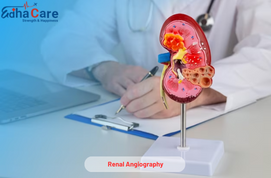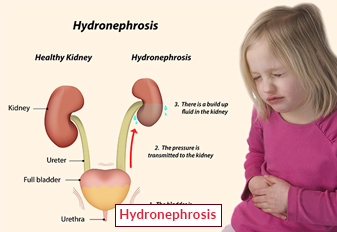Renal Angiography

Renal angiography is the technique for visualizing renal blood vessels. It involves injecting a comparator into the renal arteries that supply blood to the kidneys, which was observed with X-ray trapping animals This imaging technique helps to identify and diagnose many conditions that affect renal blood flow vessels, including blood clots, thrombosis, or abnormalities. Renal angiography has been chosen to detect renal artery stenosis, narrowing of the arteries supplying blood to the kidney, and renal angiography to assess vascular anatomy before renal surgical treatment or transplantation. This procedure involves the size and type of renal blood vessels and specific information, which helps in accurate diagnosis and early control of angiogram renal dysfunction.
About Renal Angiography
Renal angiography is a diagnostic procedure vital for evaluating renal blood vessels, especially in cases in which vascular abnormalities are suspected. Symptoms indicating the need for angiogram renal include out of control high blood pressure, renal artery stenosis, or different vascular situations affecting kidney characteristics. Common causes for these symptoms encompass atherosclerosis, fibromuscular dysplasia, or blood clots, that can compromise the renal blood delivery. The most important objective of angiography is to visualize and check the renal arteries via the injection of an evaluation dye, making an allowance for unique X-ray imaging. This technique allows pick out blockages, aneurysms, or abnormalities in blood waft within the renal vasculature. Renal angiography is instrumental in diagnosing conditions like renal artery stenosis, guiding subsequent interventions or surgical procedures. Additionally, it plays a critical position in pre-operative assessments for kidney transplantation, making sure a complete knowledge of the vascular anatomy. Despite its diagnostic application, the method involves some dangers, including evaluation of dye allergies or capability damage to blood vessels. Therefore, careful consideration of signs, reasons, and ability blessings is essential before opting for renal angiography as a part of a complete technique for renal vascular fitness.
Procedure of Renal Angiography
Patient Preparation: Ensure the affected person is sufficiently informed about the technique and has supplied consent. Assess for any hypersensitive reactions to assessment dye and address pre-present scientific conditions.
Access Point: Typically executed through the femoral artery, a catheter is inserted into the groin region. Alternatively, the radial or brachial artery can be utilized in certain cases.
Contrast Injection: An assessment dye is injected through the catheter into the renal arteries, enhancing visibility throughout imaging. The dye allows highlighting of any abnormalities or blockages inside the renal blood vessels.
Fluoroscopic Imaging: X-ray images are captured in real-time, permitting the visualization of the evaluation dye because it travels through the renal arteries. This dynamic imaging provides targeted data approximately the vascular systems.
Post-procedural assessment: Once the imaging is done, the catheter is removed, and pressure is applied to the access site to stop bleeding it is important to check for immediate complications such as bleeding or ulceration.
Recovery: Patients are checked after surgery within a few hours to ensure stability. Bed rest and limited movement may be recommended initially.
Follow-up care: After renal angiography, patients may undergo further evaluation or therapeutic intervention based on findings. Careful monitoring and follow-up care are essential for a comprehensive neuromuscular health assessment.
Require Assistance?
Get A Quick Callback From Our Healthcare Experts






